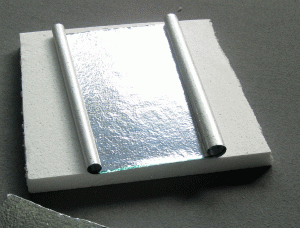ASK A BUILDER
By CCHRC Staff
The “Ask a Builder” series is dedicated to answering some of the many questions Fairbanks residents have about building, energy and the many other parts of home life.
Q: Recently I read the News-Miner story about the heat pump being installed at Weller Elementary School. Are there different ways to install this type of system and is this something I can do myself?
Ground source heat pumps operate in a way similar to how a refrigerator transfers heat out of an insulated box to the surrounding air of your kitchen. In this case, the heat pump absorbs heat from the ground and transfers it to a home. The heat exchange mechanism between the ground and the heat pump is typically a series of liquid-filled tubes.
There are different methods to get the heat out of the ground each of which require different installation needs.
One system is the shallow horizontal trench, which is being used at Weller Elementary.
In this configuration, the tubes are made into overlapping loops and placed approximately 10 feet in the ground. For people who live in areas of shallow ground water, it is beneficial to get the loop below the ground water table. This requires a large area, so this type of system is probably not feasible in a downtown lot, but would work well on a southsloping hillside with a lot of land available.
Another option to consider is drilling multiple wells.
These would be similar to drilling a drinking water well for a home, except that only the heat in the water is being extracted, not the groundwater itself. It is likely that more than one well would be needed to heat a house.
The third option is to sink the ground loops deep into a body of water such as a pond or lake, provided that the water body is sufficiently large to accommodate the heat demand. Contact the Alaska Department of Environmental Conservation before beginning this type of project.
All of these options are for a “closed-loop” system, where freeze-protected fluid is circulated in a closed system of piping. There are also “open-loop” systems that draw ground water directly and then inject the water back into the ground.
In most cases these are not appropriate for use in Interior Alaska.
In terms of a do-it-yourself project (and Alaskans are pretty handy) a heat pump involves digging a deep well or large trench, which will probably require hiring a driller or excavator. The equipment that makes up a heat pump is technical. Hiring someone who has been certified by the manufacturer or by the International Ground Source Heat Pump Association to install these systems is recommended.
Contact local heat pump distributors to get more information on installation.
Alaska HomeWise articles promote home awareness for the Cold Climate Housing Research Center (CCHRC). If you have a question, e-mail us at akhomewise@cchrc.org.You can also call the CCHRC at (907) 457-3454.
